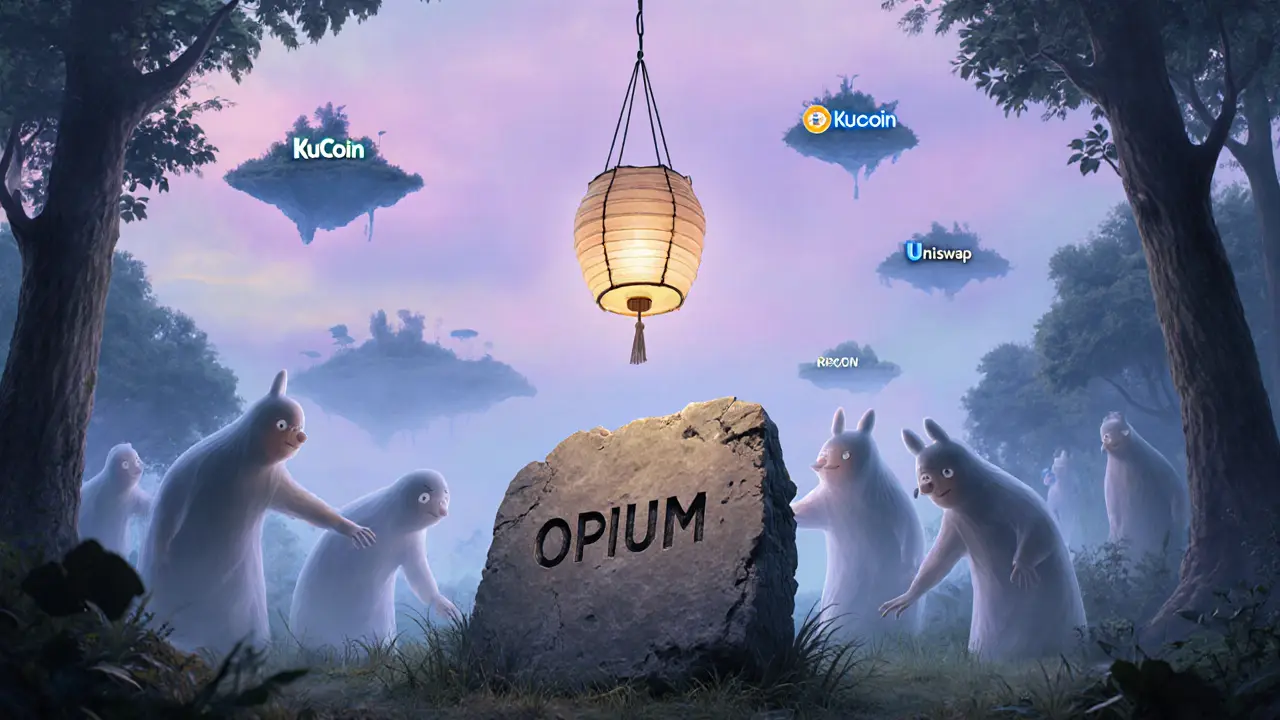OPIUM price: What it is, where to track it, and why it's not listed anywhere
When you search for OPIUM, a DeFi token that once claimed to offer options trading on blockchain. Also known as OPIUM token, it was designed to let users hedge against crypto volatility using synthetic options—kind of like insurance for your holdings. But here’s the catch: OPIUM doesn’t trade anywhere anymore. No CoinMarketCap, no CoinGecko, no Uniswap pair. If you see a price online, it’s fake—made up by a scam site trying to trick you into connecting your wallet.
OPIUM was built on Ethereum and launched in 2020 as part of the DeFi boom. It had a working protocol, real users, and even a tokenomics model that rewarded liquidity providers. But by 2022, development stopped. The team vanished. The website went dark. And without active trading or liquidity, the token became worthless. It’s not just dead—it’s abandoned. Many people still search for OPIUM price because they bought it years ago and hope it’ll come back. It won’t. And if someone tells you they’re selling OPIUM at a discount, they’re either lying or running a honeypot scam.
What OPIUM teaches us is simple: not every token with a cool name survives. Many DeFi projects launch with big promises, attract early adopters, then disappear when funding runs out or the team moves on. You’ll see the same pattern with tokens like METANO, W3S, and JANET in the posts below—low liquidity, no updates, fake prices. These aren’t investments. They’re digital ghosts.
If you’re looking for real DeFi opportunities, focus on tokens with active development, verified contracts, and trading volume on major exchanges. OPIUM isn’t one of them. But understanding why it failed? That’s valuable. Below, you’ll find real guides on tokens that are alive, scams you need to avoid, and how to check if a crypto project is actually working—or just pretending to be.
What is Opium (OPIUM) Crypto Coin? The Truth About This Obscure Token
Opium (OPIUM) is a micro-cap crypto token with no team, no whitepaper, and no utility. Trading at $0.03, it's confused with a separate NFT collection. Avoid it-there's no legitimate reason to invest.
